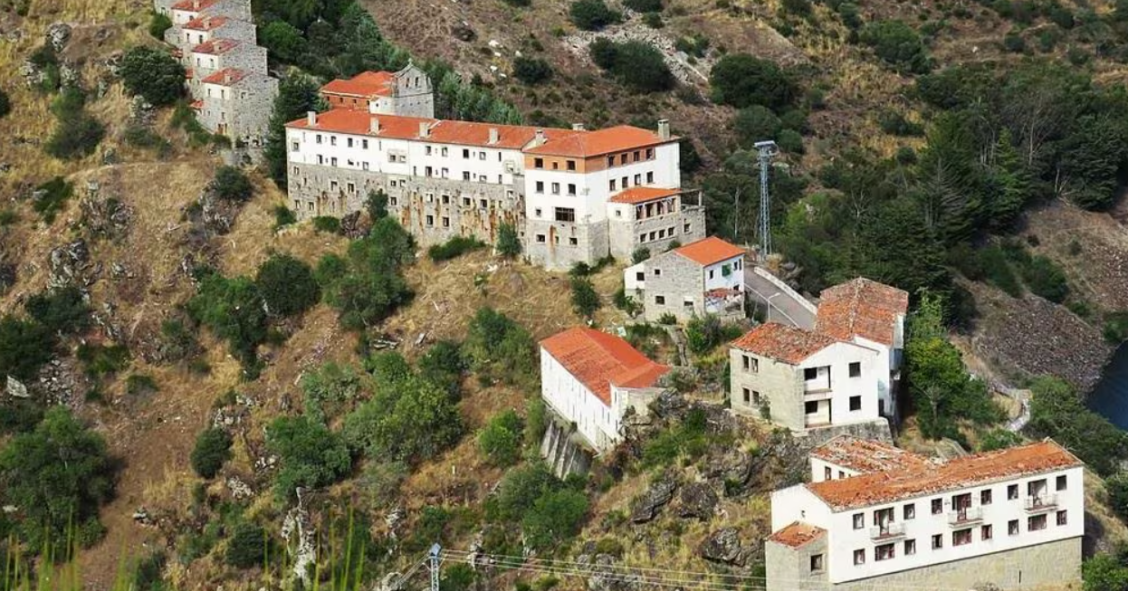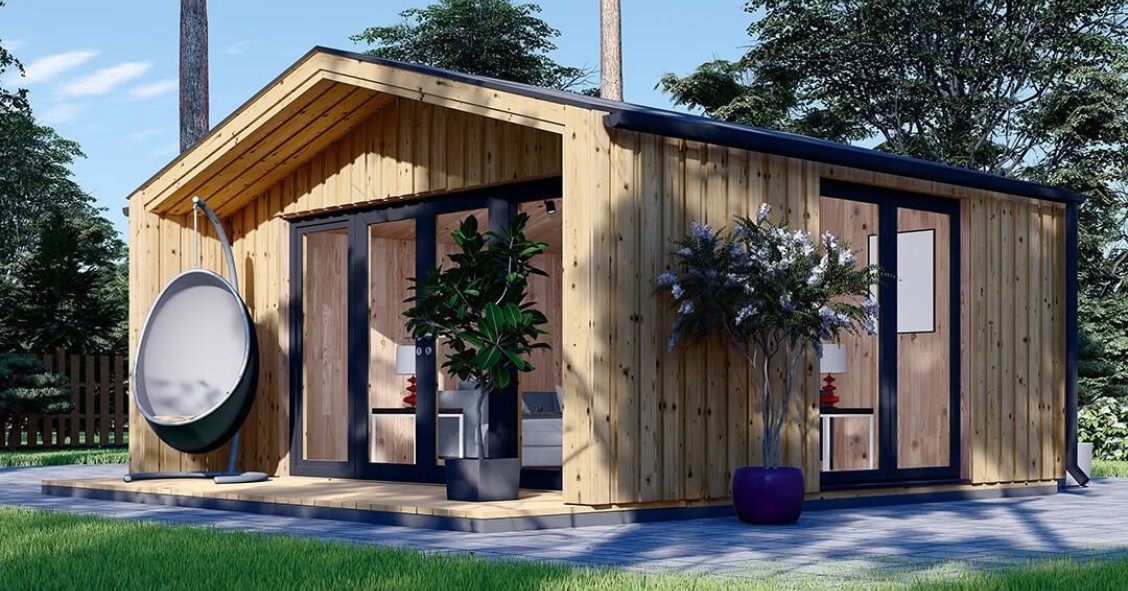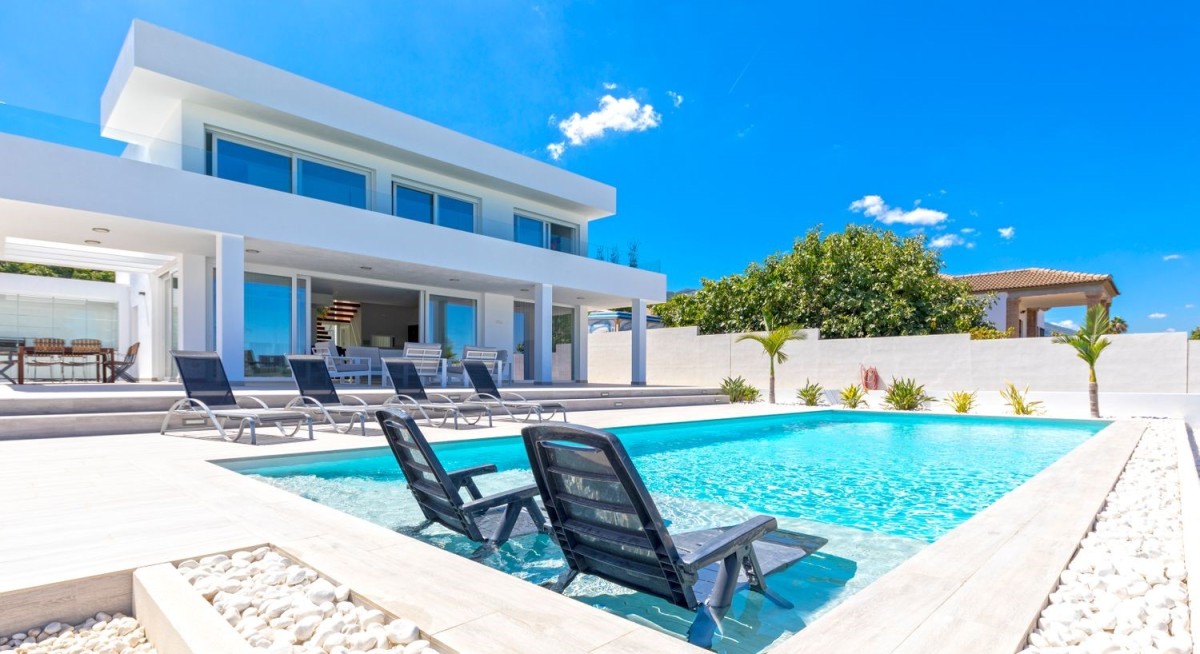
Between January and June 2022, 328,208 home sales and purchases were recorded in Spain, levels not seen since 2008. In fact, the 163,909 sales recorded in the second quarter of this year alone are the second best result since the beginning of 2008, behind only the 164,299 recorded in the first quarter of 2022, according to the Real Estate Registry Statistics of the Association of Property Registrars, which collects quarterly data. As well as this, foreigners are buying more houses than ever in Spain. We have the details of what they are buying and where they are choosing to live.
Increases in foreign demand in Spain
One of the reasons why more homes are being transacted than at any time since the last property boom is the marked interest of foreign buyers in buying property in Spain. Since registrars have been collecting data on the nationality of home buyers, the maximum levels had been above 13%, without reaching the levels reached in the last quarter. "This represents a significant increase in foreign demand in a market that has been particularly intense since the end of the pandemic," state registrars in Spain. Only at the end of 2015 it reached 14.38%, but in another economic context in which barely 84,000 homes were sold between October and December of that year.
And the fact is that, from the third quarter of 2021, when the entry of foreign citizens to Spain was more widely permitted after the end of the strict measures to control access to the country due to the pandemic, the purchase of homes by foreigners once again reached pre-pandemic figures. From July 2021 onwards, transactions have not fallen below 16,000 in the following four quarters.
Foreigners buying property in Spain in 2022
The following data represents the total number of property transactions in Spain (purple) in the corresponding quarter, the percentage of transactions completed by foreigners (grey) and the total number of property purchases made in Spain by foreigners (green).
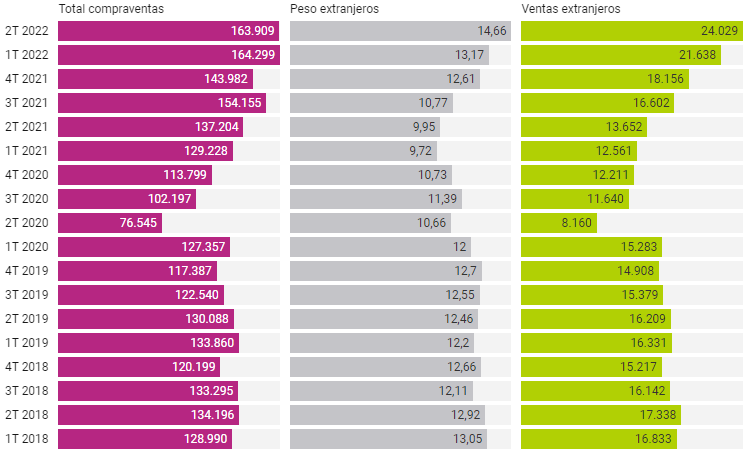
In the two quarters to date in 2022, transactions by foreigners have exceeded 20,000, absolute numbers that have never been recorded before. Between January and March, foreign buyers acquired 21,638 homes, while between April and June they surpassed this figure with 24,029 home purchases. "This is undoubtedly a segment with a significant upward trend, which is helping to achieve particularly relevant figures in residential real estate activity," registrars highlight in their report.
The average for these last four quarters is 20,106 home signings, while in the four preceding quarters (Q3 2020-2Q 2021), the average was 12,516 transactions. In 2018, the record year for home purchases by foreigners in Spain with more than 65,500 transactions, the average was close to 16,380 transactions per quarter.
"The favourable evolution of foreign demand is confirmed by the fact that the percentage of purchases by foreigners accumulates a new quarter of growth, being especially relevant in a period with a high number of home sales and purchases in absolute terms", add registrars.
Where the British, Germans and French buy property in Spain
The data on home purchases in Spain by foreigners confirm a trend, since the return to normality after the pandemic, towards a much more equitable proportion in the distribution of the total number of transactions.
The nationalities that bought the most houses in Spain between April and June were the British (9.8%, 2,310), the second lowest figure since data has been available, followed by Germans (9.1%, 2,140), French (6.6%, 1,560), Moroccans (4.9%, 1,160), Belgians (4.9%, 1,155), Romanians (4.8%, 1,150), Dutch (4.8%, 1,130) and Italians (4.6%, 1,080). This situation is particularly noticeable in the British, who have always been the main buyers of homes in our country, reaching levels above 20% in 2015, although on average they have exceeded 12.5%. But since the end of 2020, there have already been three quarters where they have not exceeded 10% of the total number of transactions among foreign buyers.
"Observing the graphs of the evolution of the year-on-year results in the number of purchases for these nationalities, it can be seen that practically all of them, except for the British, are at the highest levels in recent years", the registrars highlight in their report.

This is a situation that is confirmed on the ground by agents in the Spanish housing sector. "Regardless of the rebound effect of pent-up demand during the COVID years, we are seeing more and more buyers in Spain looking to take advantage of longer periods or stays and to work remotely," says Alfredo Millá, CEO of Sonneil. "This is a new and very promising phenomenon for the second home market in Spain and, if it consolidates and generates a knock-on effect, it can greatly increase the volume of buyers," he says.
The post-pandemic effects are confirmed by Marc Pritchard, Sales and Marketing Director of Taylor Wimpey España. "Housing has become more important in the post-COVID era, with the rise of teleworking. But it has also become a safe haven investment in the face of stock market volatility and low interest rates at banks. There is also the energy effect, as energy costs are cheaper in Spain than in other countries, and heating is needed for more months in the rest of Europe.
Other outstanding factors that experts see and which have always attracted foreign buyers, such as "the climate, air connectivity or the cost of living", according to Mario Garnica, director of Engel & Völkers Málaga, which for the capital of the Costa del Sol itself, and can be transferred to other coastal cities, adds "its cosmopolitan character or the technological business ecosystem, among others", he specifies.
Alicante, Málaga and both archipelagos are still the areas where foreigners have the greatest weight in the housing market. Alicante's Costa Blanca continues to lead the way (42.2%), accompanied by the Canary Islands province of Santa Cruz de Tenerife (38.3%), the Balearic Islands (34.6%), Málaga (32.8%) and the other island province of Las Palmas (26.6%). Girona (26.3%) and Almería (20.2%) are other provinces where the weight of foreigners in the purchase of houses is notable. For more information on which parts of Spain are most popular amongst British expats, check our our guide.
"The Costa Blanca tends to be one of the preferred areas due to the lower prices, while the Costa del Sol has the highest volume of properties for sale", comments Taylor Wimpey España. "The most sought-after properties tend to be two and three-bedroom flats and three-bedroom townhouses with terraces, swimming pools and communal gardens in tourist areas. But with the requirement of being either near the beach or near a golf course, and that mainly serve as a second home," says Marc Pritchard.
For a more urban profile, Engel & Völkers Málaga comments that "the most repeated profile is that of a buyer between 45 and 60 years of age of multiple nationalities, from Germany, France, Holland, Belgium, USA or Mexico, and who is looking for a flat in the historic centre, in the coastal area or in a villa. The average budget is around 850,000 euros.
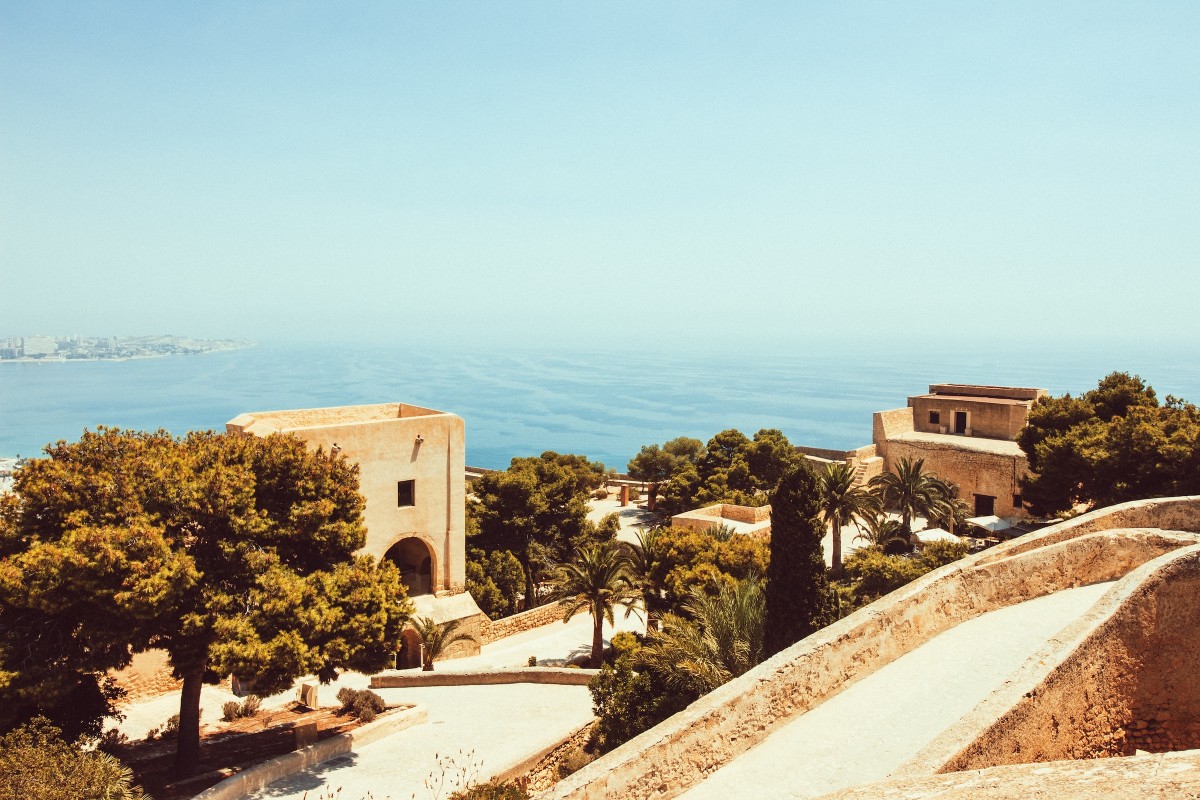
Forecast to return to pre-COVID values in 2023
The experts foresee that these peak figures will slow down due to the delay in the decision to buy because of the current economic context of uncertainty, with inflation still high in many countries around us, the increase in interest rates in the EU, as well as in the UK and the USA, and the economic consequences of the war in Ukraine.
The Sales and Marketing Director of Taylor Wimpey Spain affirms that 2023 will be the year of the return to normality, with values similar to the pre-COVID years, after an atypical three-year period (2020-2022).
Sonneil believes that the outlook for new construction will be more encouraging than for pre-owned properties, as it will hardly be affected by the slowdown that is expected in the rest of the sector. "New-build homes offer an added value that puts them above pre-owned homes. They are homes built with sustainability and energy efficiency criteria, with durable materials and qualities and which, in addition, respond to the new demands of buyers, with spaces for teleworking and enjoying the outdoors," says the CEO of the Spanish prop-tech company.
For Mario Garnica, Málaga will continue to be the target of foreign investors, especially from the USA, given the current strength of the dollar against the euro, while teleworking is gaining ground and the good quality of life in Spanish cities is being confirmed.





